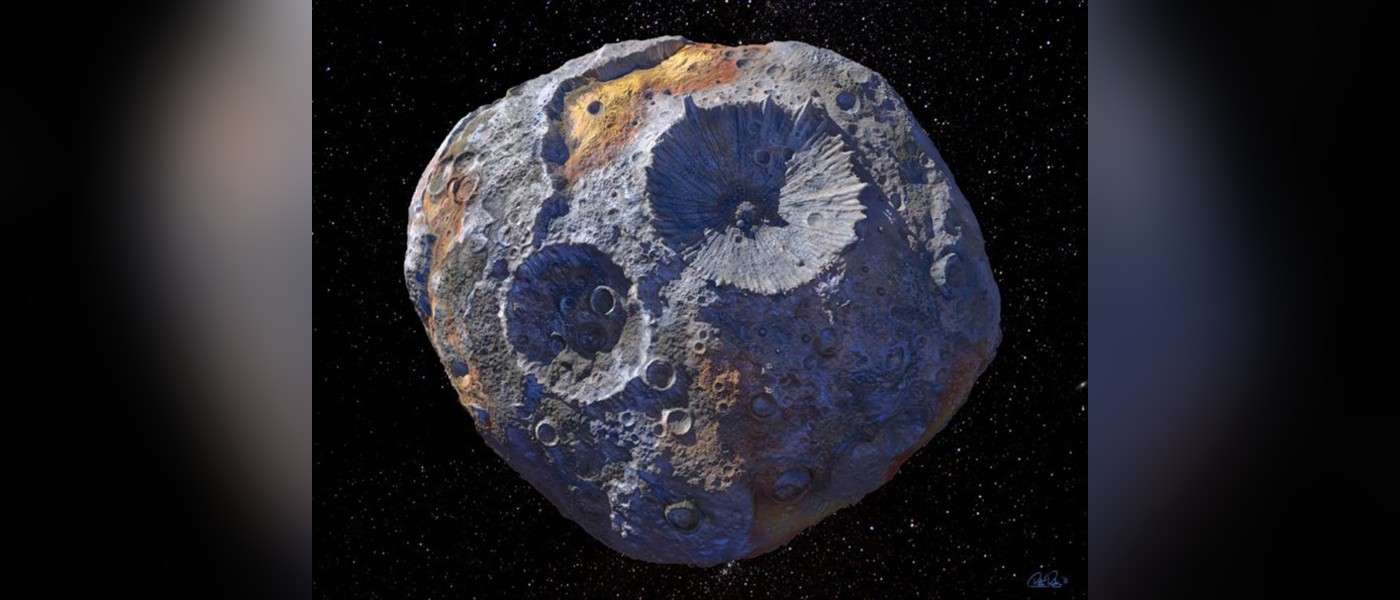These Stunning 4K Space Videos From NASA Will Help You Escape Earth's Orbit For a While
See the Moon, Earth, and Sun in stunning 4K-Ultra-HD with NASA's video gallery, perfect for a small break to refocus during work.

Out between Mars and Jupiter in the solar system's asteroid belt, there's a lump of iron and nickel called 16 Psyche that has a value of $10,000 quadrillion: that's 70,000-times more than the entire world economy.
With measurements of its density paired with its 140 mile-diameter, recent telescopic surveys with different spectrums of UV light have confirmed the asteroid to be around 90% iron, adding the last value in the equation to give 16 Psyche its whopping price tag.
Sitting 230 million miles from Earth, it offers a much different kind of value to scientists, namely to study one of the largest entirely-metal objects in the solar system, one which scientists believe could be a protoplanet that was disrupted during natural formation.
It's now the subject of a 2022 NASA mission that will send an orbiter on a 3.5 year-mission to study a new type of world made of metal.
The orbiter will try to determine whether it's simply a mass of iron and nickel, or indeed a planet's core, as well as its age, and whether it can contain lighter elements found in Earth's high-pressure core.
"We've seen meteorites that are mostly metal, but Psyche could be unique in that it might be an asteroid that is totally made of iron and nickel," said Dr. Tracy Becker, an expert on 16 Psyche from the Southwest Research Institute.
"Earth has a metal core, a mantle and crust. It's possible that as a Psyche protoplanet was forming, it was struck by another object in our solar system and lost its mantle and crust."
Becker, who published a UV-light observation study of the asteroid last year, considers it a chance "to understand what really makes up a planet and to potentially see the inside of a planet."
But how is it that so much heavy metal should congregate outside of a festival ground in Germany?
Vice President of Arizona State University's interplanetary initiative, Lindy Elkins-Tanton, spoke with NASA on a radio program in early July to explain.
"It's not the Death Star," says Elkins-Tanton. "It turns out that we know this from meteorites; that the most primitive material, the building blocks of planets [are] little bits of metal and little bits of rock all mixed together."
"And when you put all that material clumped together into a [a tiny planet] they're heated up by early short lived radioisotopes," she said.
This melting forces the metal down, as it's denser than the comparatively porous rocky material present on the asteroid or planet, forming the metallic core.
"We've got a big clump of metal, our core, inside of the Earth," said Elkins-Tanton. "There's one inside of the Moon, amazingly, inside of Mars, inside of Mercury, inside of Venus, but we never, ever get to see them. So Psyche gives us, we think, a way to see the core of a planetesimal, maybe the only way humans will ever see a core if our ideas are right."
This would be the true price tag of 16 Psyche, because even if we could somehow bring back all that iron, the supply-demand laws of economics would bring the price of iron down to levels in the hundredths of a cent.
SHARE This Far Out Story With More Astronomy Fans…
Be the first to comment